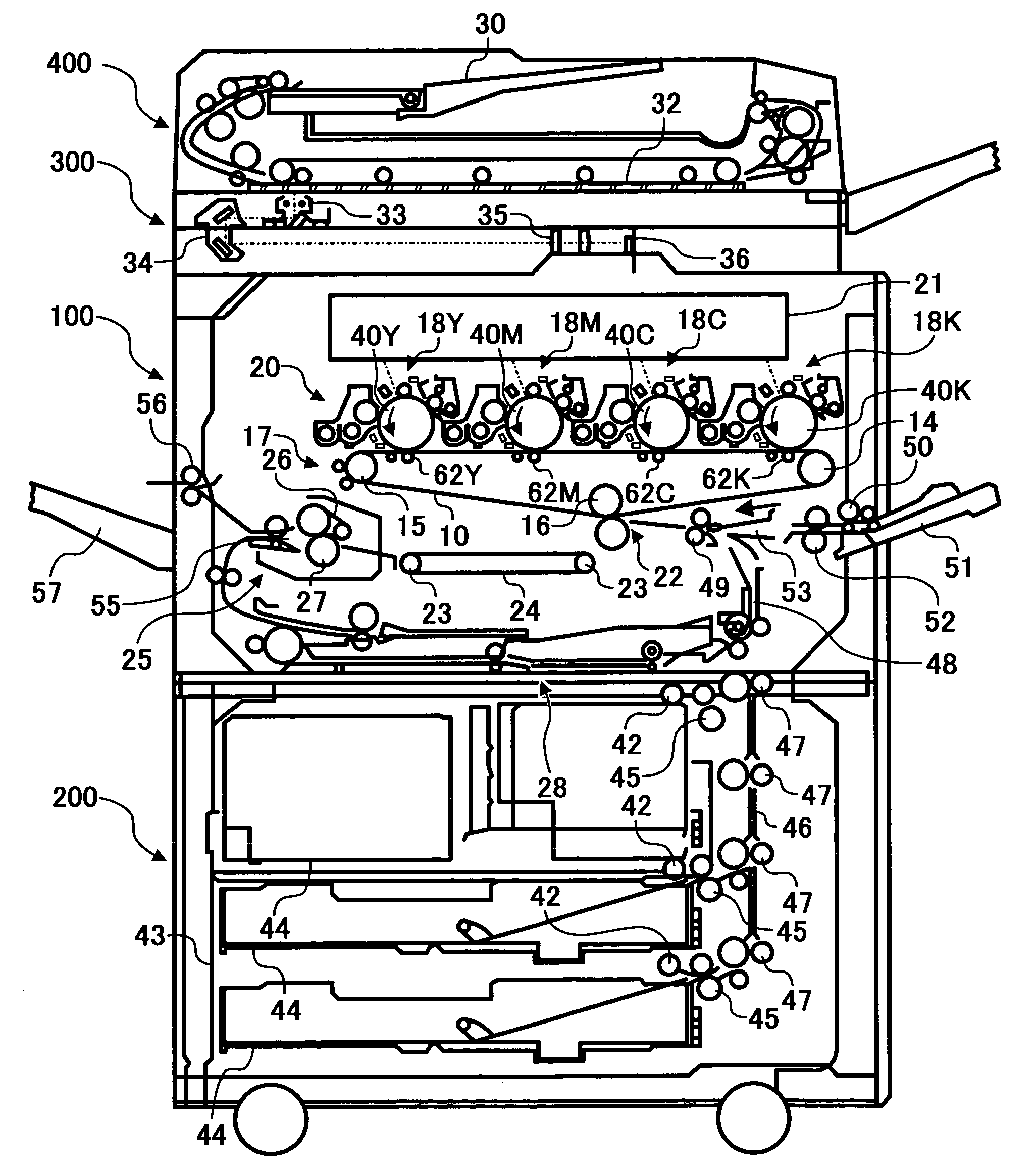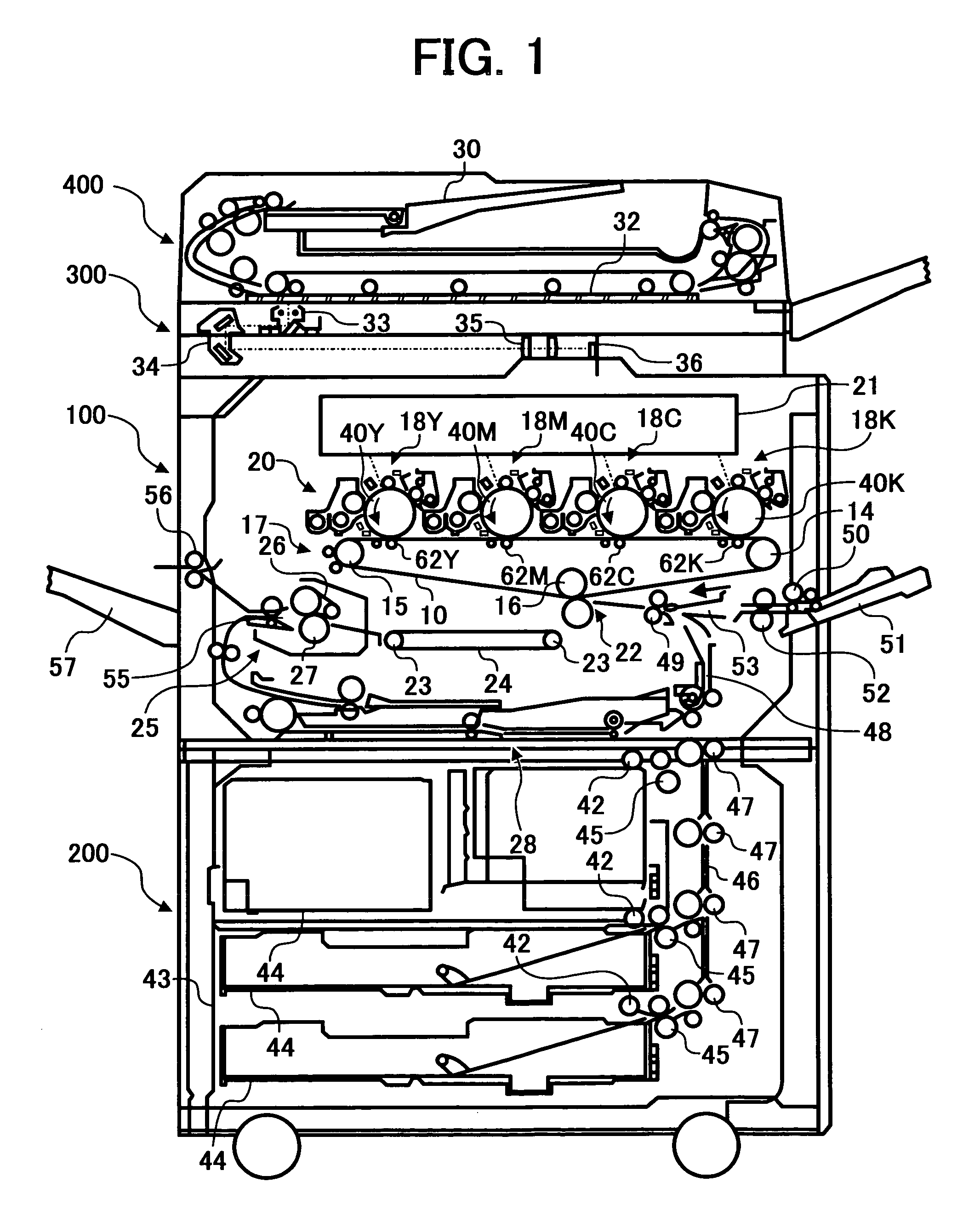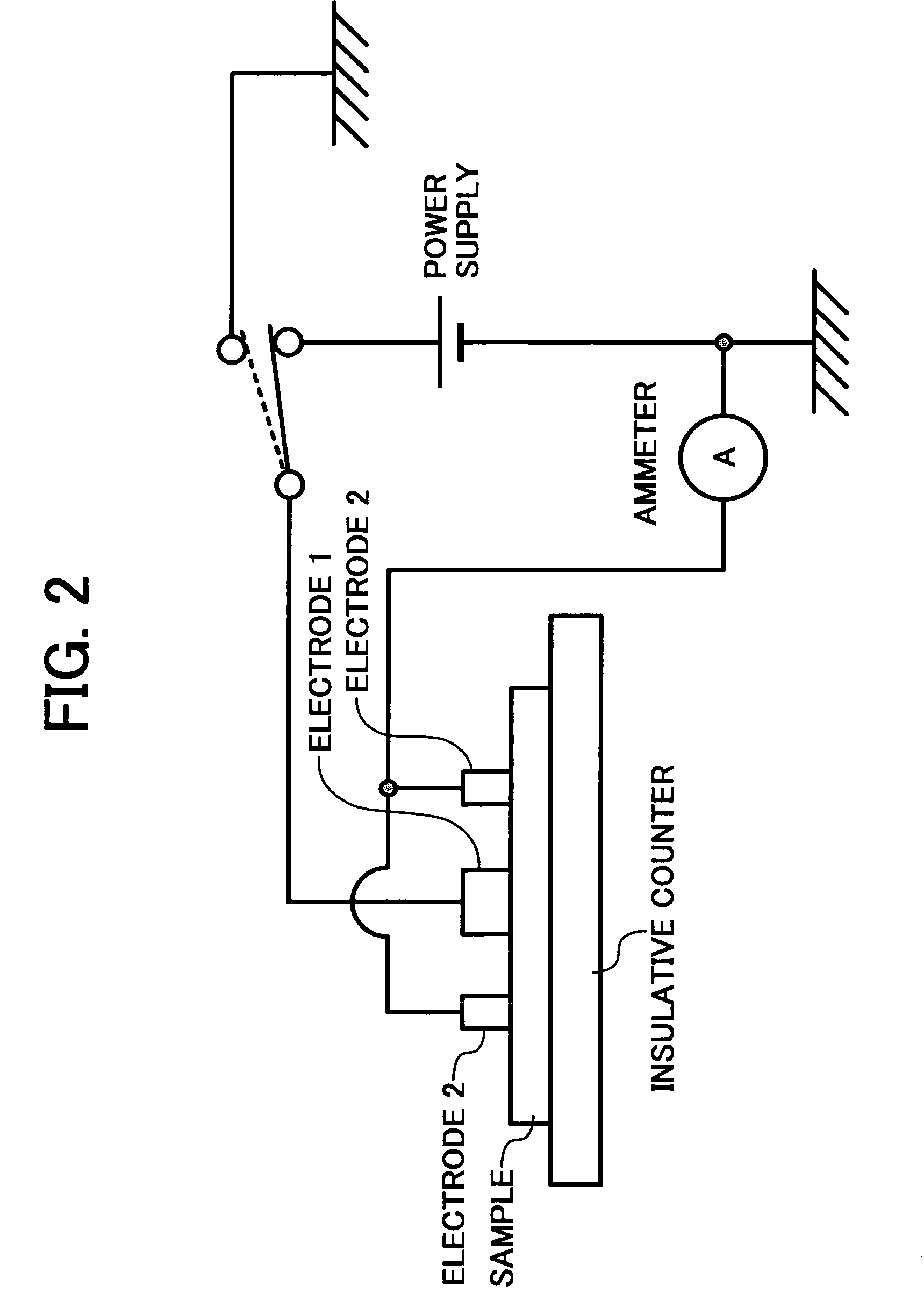Intermediate image transfer device for a color image forming apparatus
a image transfer technology, applied in the field of intermediate image transfer type of color image forming apparatus, can solve the problems of lowering image transferability, irregular image transfer, and varying resistivity on the surface of the belt to which a bias is applied
- Summary
- Abstract
- Description
- Claims
- Application Information
AI Technical Summary
Benefits of technology
Problems solved by technology
Method used
Image
Examples
example 1
[0115]The belt 10 was implemented as a belt whose surface potential, as measured at a position to which a primary image transfer bias V0 was applied, decreased to V0 / 2 or below in 5 seconds since the application of the bias. More specifically, a surface potential attenuation ratio, i.e., the ratio of charge remaining on the belt 10 in 5 seconds to the original charge was ½ or less. Let such residual charge left on the belt 10 in 5 seconds be referred to as a 5-second potential hereinafter.
[0116]FIG. 16 shows a device used to measure the surface potential attenuation ratio of the belt 10. As shown, a probe is pressed against one surface of a belt or sample while a counter electrode, which is grounded, is held in contact with the other surface of the belt. For measurement, HYRESTER and URS mentioned earlier were used. A voltage of 100 V output from a high-tension power supply was applied via a switch at preselected timing. Subsequently, the switch is brought into connection with a sur...
example 2
[0124]Example 2 is practicable with the same copier configuration as Example 1. This is also true with the other examples to follow. The following description will therefore concentrate on configurations unique to Example 2.
[0125]In Example 2, a period of time in which the surface potential of the portion of the belt 10 applied with a primary image transfer bias V0 drops to V0 / 2 is determined to be T seconds, which is the interval between the preceding and following primary image transfer. More specifically, T seconds is the interval between the time when a black toner image, which is the last one of four toner images constituting a composite color image, is transferred to the belt 10 and the time when a yellow toner image, which is the first one of four toner images, is transferred to the belt 10 after the secondary transfer of the above composite toner image to a sheet. Let the potential remaining on the belt 10 in T seconds be referred to as T-second potential.
[0126]Experimental ...
example 3
[0130]In Example 3, the belt 10 is provided with surface resistivity of 107 Ω / □ or above, but 1012 Ω / □ or below, on the inner surface thereof to which the primary image transfer bias Vo is applied. Hereinafter will be described experimental results indicating a relation between the surface resistivity of the inner surface of the belt 10 and image quality.
[0131]FIG. 19 shows the results of estimation effected with nine belts Nos. 7 through 15 each having particular surface resistivity by use of the copier shown in FIG. 1. More specifically, whether or not an image was defective was determined on the basis of an image transfer ratio and a discharge mark. Surface resistivity was measured by HYRESTER-UP mentioned earlier at temperature of 23° C. and humidity of 50%. The probe URS mentioned earlier was also used. The voltage applied was 500 V.
[0132]As FIG. 19 indicates, when the belt No. 7 with the surface resistivity of less than 1×107 Ω / □ on the inner surface was used, the image transf...
PUM
 Login to View More
Login to View More Abstract
Description
Claims
Application Information
 Login to View More
Login to View More - R&D
- Intellectual Property
- Life Sciences
- Materials
- Tech Scout
- Unparalleled Data Quality
- Higher Quality Content
- 60% Fewer Hallucinations
Browse by: Latest US Patents, China's latest patents, Technical Efficacy Thesaurus, Application Domain, Technology Topic, Popular Technical Reports.
© 2025 PatSnap. All rights reserved.Legal|Privacy policy|Modern Slavery Act Transparency Statement|Sitemap|About US| Contact US: help@patsnap.com



